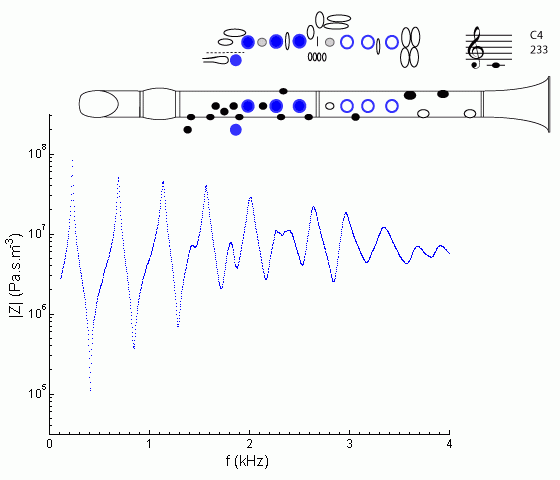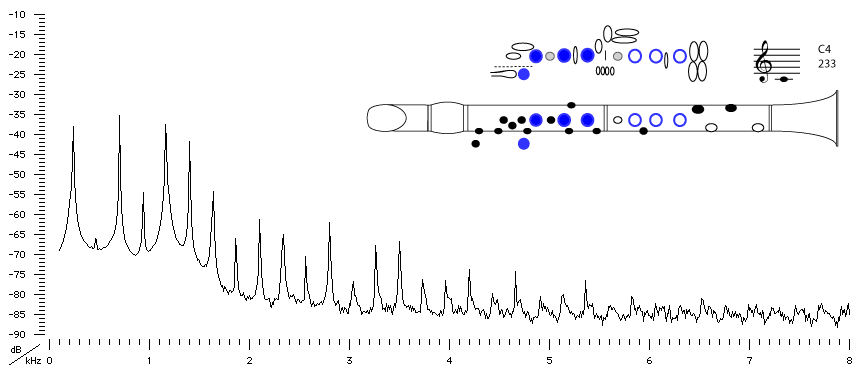| Acoustics of the clarinet |
Bb clarinet |
C4 |

|
Fingering Acoustic schematic Non-specialist introduction
to acoustic impedance Notes are the written pitch. |
As we proceed up the chalumeau register, the low even harmonics in the sound spectrum become gradually stronger, and now the 4th is creeping up on the level of its odd neighbours.
For general comments about the chalumeau register, see E3.

Sound spectrum
of a Bb clarinet
played using fingering for C4.
For more explanation, see
Introduction to clarinet acoustics
|
Contact:
Joe Wolfe
/ J.Wolfe@unsw.edu.au |